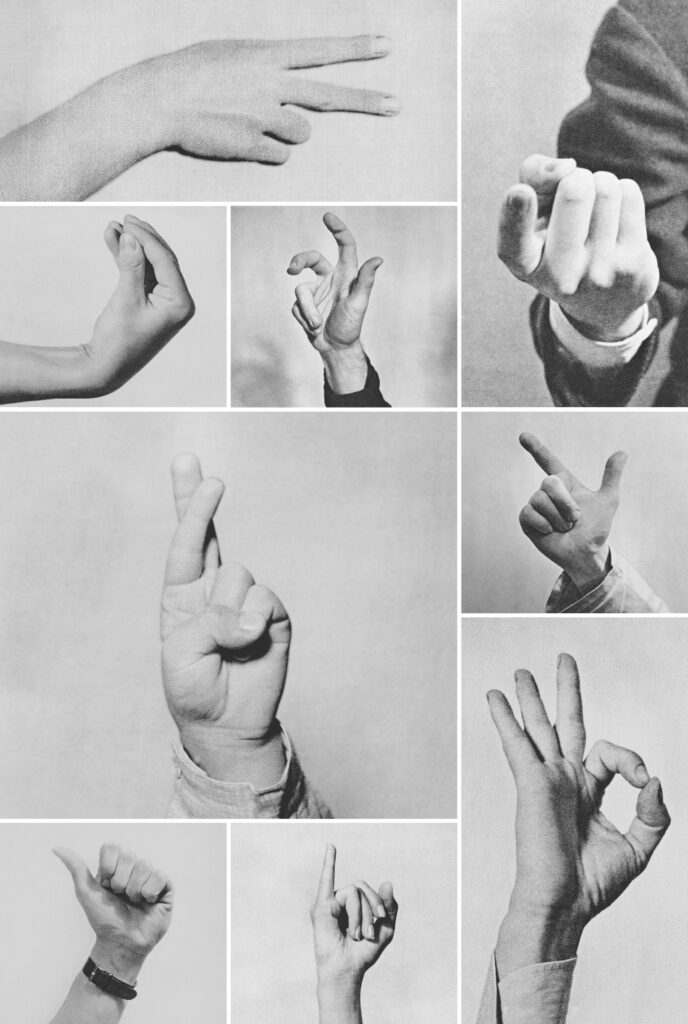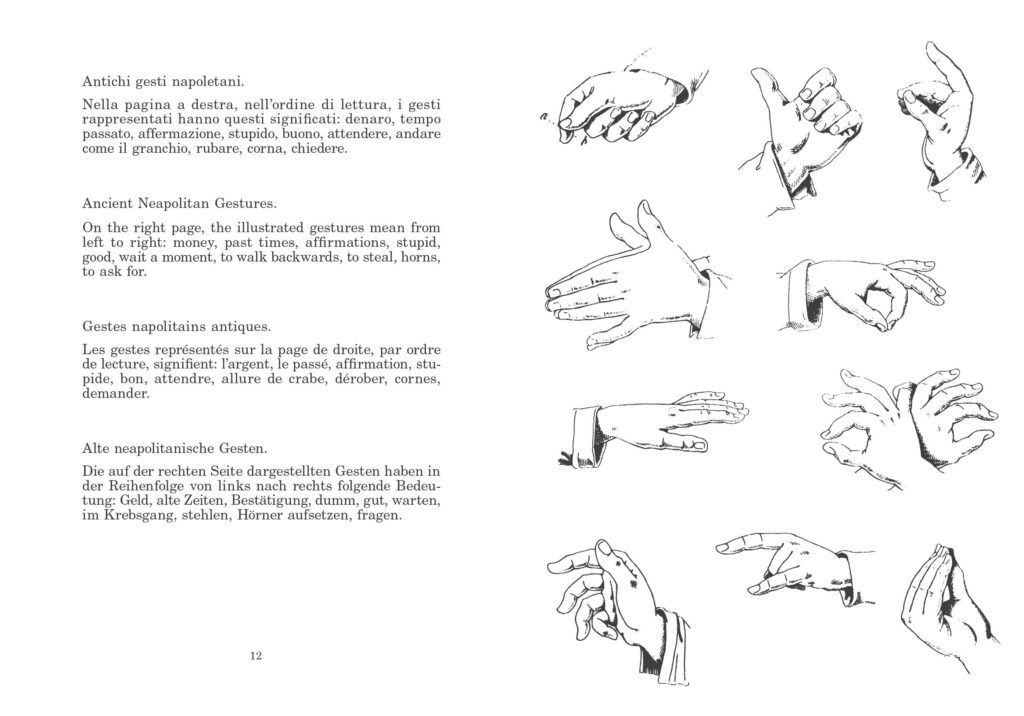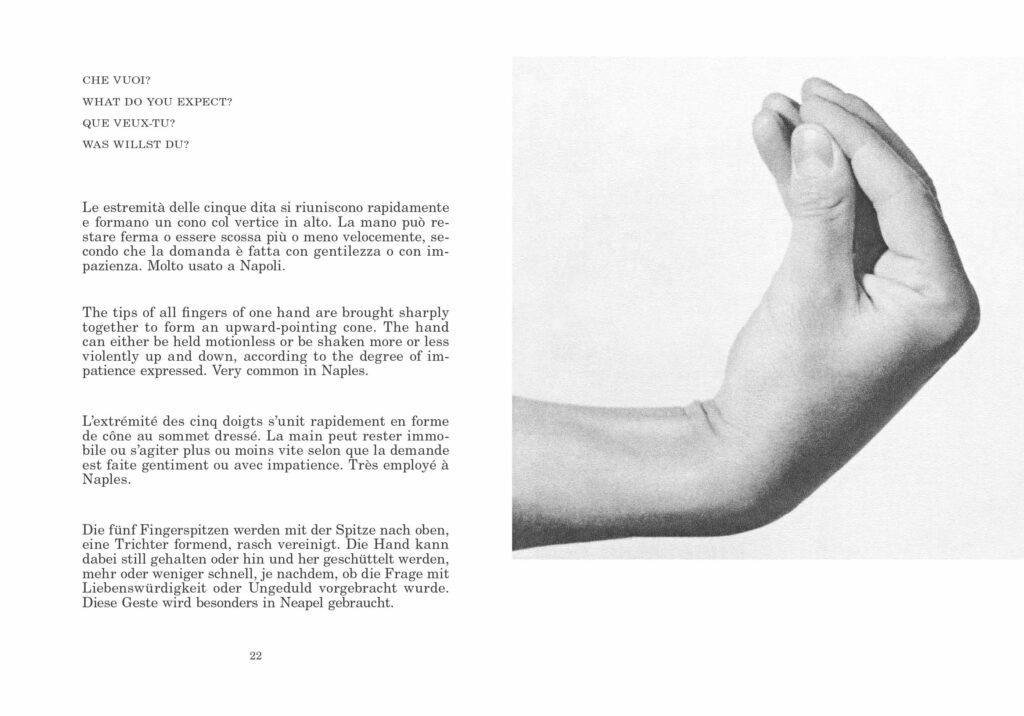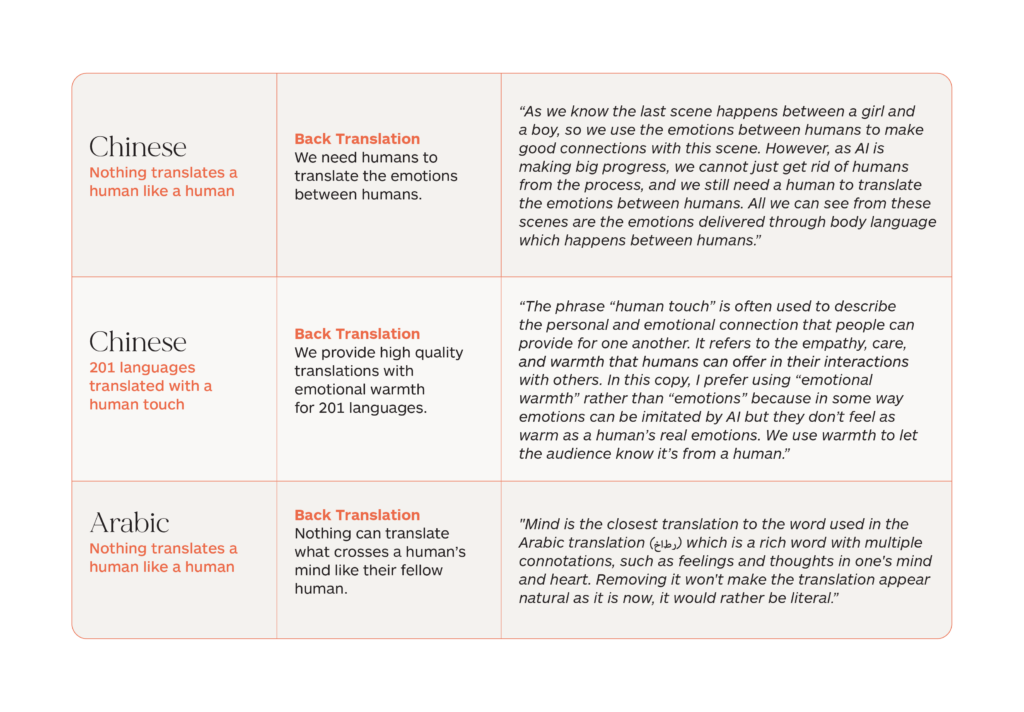Localization
In the contemporary era of intercultural globalization, cultures no longer compete or overshadow one another; instead, there is a crucial necessity for active listening, understanding, and mutual recognition. Amidst this context, although human creativity remains a constant capability, the process of creative production undergoes a significant transformation.
Motivated by a proactive commitment to culturalization, we will delve into a thorough analysis of this emerging requirement. Subsequently, we will explore a specific case study, directing our focus towards the proactive intercultural creative process that shaped our most recent brand campaign, “Human Touch.” In the culmination of our creative endeavor, the commercial has exceeded expectations in both brand awareness and engagement. We’ve effectively elevated an Italian concept into an international ready script, streamlining the process for scalability.
However, this achievement just marks the commencement of our journey. As we gaze into the future, we plan to kickstart a new project next year. Ensuring authenticity in localization is our paramount focus, and the first step will involve initiating collaboration with local creatives from the outset. By infusing internationally ready content with genuine local flavors, our ultimate aim is to create distinctive short films tailored to resonate with the nuances of each specific culture.
In the ever-evolving realm of creativity, language has historically served as the primary means of communication. However, a deeper exploration of various cultures reveals the limitations of language in establishing authentic connections with diverse audiences. This awareness leads us into the transformative realm of proactive culturalization—a journey that goes beyond linguistic barriers to create resonant and impactful creative content imbued with a profound cultural essence.
Our approach, which we call the Proactive Intercultural Creative Process, proves superior to cultural validation in generating creative impact, enhancing consumer engagement, and elevating the quality of creative thinking. In today’s consumer market, brands strive to forge deep connections with niche audiences by strategically aligning with fandoms, thus fostering innovation and convergence across various sectors such as fashion, food, beauty, sports, and retail. Initiating our process at the outset of the creative journey allows for the expansion of creative potential and its reach among niche audiences.
Simultaneously, digital culture not only preserves local cultures but also plays a role in facilitating their ability to thrive while maintaining a communal sense of rooted pride. Adopting an empathetic perspective and recognizing the rightful need for representation and credit for local cultures, brands can utilize creativity to empower these communities. The Intercultural Creative Process enables local cultures to inspire a broader audience with their deeply rooted sense of pride, contributing to a positive impact in the larger cultural landscape.

Bruno Munari, Supplemento al dizionario italiano (Corraini Edizioni 1999) © 1963 Bruno Munari. All rights reserved to Maurizio Corraini s.r.l.
That’s why we prioritized involving local creatives right from the outset of our new brand campaign. Our collaboration with individuals from diverse cultures added authenticity, depth, and a distinctive perspective to our creative endeavors. By actively engaging with local creatives, we’re not only validating our ideas with the market, but also ensuring that our campaign resonates with the cultural nuances of our target audience.
Our Intercultural Creative Process offers several advantages:
Authenticity
Local creatives bring an authentic voice and a deep understanding of their culture, helping us steer clear of cultural misinterpretations or stereotypes in our campaign.
Relevance
The involvement of local creatives ensures that our campaign is deeply relevant to the specific cultural context, making it more relatable and appealing to our target audience.
Diversity of Ideas
Embracing different perspectives fosters creativity. Collaborating with individuals from various cultural backgrounds can lead to innovative ideas that might not have been generated within a more homogenous creative team.
Community Connection
By engaging local creatives, we’re strengthening our connection to the community. This not only contributes to a positive brand image but also fosters increased loyalty among the local audience.
Empowering Cultures
Providing a platform for local creatives allows them to express themselves and showcase their talent. It’s a mutually beneficial relationship where our brand gains from their creativity, and they, in turn, gain exposure.
We wanted to be sure to uphold open communication channels throughout the process, ensuring that our collaboration is always respectful, inclusive, and transparent. This approach not only enhanced our brand campaign but also made a positive contribution to the cultural landscape in which our brand operates.
“Human Touch”: Reading the Unspoken
We have the unique ability to translate every look, gesture, and touch into meaningful communication with one another. We’re able to do this because our cultural familiarity and understanding allows us to connect through every glance, every sign, every nuance.
“Human Touch,” is a new film by Translated that highlights the uniqueness of humans. It emphasizes the profound importance of the unspoken, which emerges as a universal idea. The inception of the creative idea is marked by a fundamental insight — nothing translates a human like a human — gestures take center stage, offering a non-verbal language steeped in cultural context. Every day, we humans translate language without words, even if we’re not always aware of it. We have the unique ability to translate every look, gesture, and touch into meaningful communication with one another. We’re able to do this because our cultural familiarity and understanding allows us to connect through every glance, every sign, every nuance.
When we read the creative script, we thought, “Wow, everyone will understand this because we have taken language out of conversation.” But then we realized we were completely wrong. When it comes to gestures, there’s many different multicultural perspectives.
Do gestures have the same meaning in every culture? No, they do not!
If you take the language out of the conversation, you have to be able to read the unspoken– and the unspoken varies from culture to culture.
In cultures like Japan, for example, the ability to read the unspoken becomes an intricate art form. Today, Japanese Gen Zers don’t want to speak on the phone anymore because they “cannot read the air”.
As Erin Meyer writes in her book, The Culture Map: “In the United States and other Anglo-Saxon cultures, people are trained (mostly subconsciously) to communicate as literally and explicitly as possible. Good communication is all about clarity and explicitness, and accountability for accurate transmission of the message is placed firmly on the communicator. – If you don’t understand, it’s my fault – By contrast, in many Asian cultures, including India, China, Japan, and Indonesia, messages are often conveyed implicitly, requiring the listener to read between lines. Good communication is subtle, layered, and may depend on copious subtext, with responsibility for transmission of the message shared between the one sending the message and the one receiving it. The same applies to many African cultures, including those found in Kenya and Zimbabwe, and to a lesser degree Latin American cultures (such as Mexico, Brazil, and Argentina) and Latin European cultures (such as Spain, Italy, Portugal) including France.”
Italy elevates communication through gestures, exemplified by figures like Munari and the revered “Dictionary of Gestures”.
“In this book, the author examines the various ways of expressing oneself without speaking, not only with the hands, but with the facial expressions and attitudes of the whole person. With the passage of time and the spread of the Neapolitan people, many of these ancient gestures have become national and some are even understood in many parts of the world.”
Bruno Munari


Bruno Munari, Supplemento al dizionario italiano (Corraini Edizioni 1999) © 1963 Bruno Munari. All rights reserved to Maurizio Corraini s.r.l.
From the creative idea to multiple cultural conversations: a new creative journey
“Human Touch” was designed to resonate with a global audience from the ground up. We put translation at the center of the creative process by bringing translators, copywriters, and creatives together.
We initially focused on 12 countries, selecting 48 professional copywriters and translators from our community with deep ties to their specific regions.
We worked with them to analyze the authenticity of the body language and facial cues of the actors in the film. They explored how these gestures resonate within their cultures, delving into their meaning, cultural nuances, and implications, suggesting new creative approaches and gestures that better resonated with their unique cultures.
This collaborative, culturally nuanced approach ensures that Human Touch not only speaks a global language but does so with a profound respect for local sensibilities, ensuring that everyone can understand it in their own language.
Of course, to keep the focus on the role of translation, we have to consider that the unspoken is not explicit for everyone, that’s why translation exists. The more minimal the gestures, the more impact the creative idea has. If we use very clear gestures that everyone understands without a more specific meaning, the short film no longer exists.
That was the creative turning point.
Because obviously some cultures asked us for more clarity. Why? Because their cultures need it. What they see is what they get. But more clarity would have killed the creative idea.
It was a question of balance. We had to be able to resonate with all cultures and make them feel understood. They had to discern the meaning of the gestures through translation. That was the insight: people can decode gestures based on their culture, experience, education, feelings, and emotions. This is what humans can still do, while machines are not there yet.
The more minimal the gestures, the more impact the creative idea has. If we use very clear gestures that everyone understands without a more specific meaning, the short film no longer exists.
A Proactive Intercultural Creative Process: how we did it
To be as objective as possible, we formed a group of copywriters (3 for culture, with different cultural backgrounds) and DEI specialists.
The languages and cultures we identified were Italian, English (UK), French, German, Spanish, Spanish (Latam), Brazilian Portuguese, Arabic, Japanese, Chinese, and Hindi.
We submitted an original script to all the locales, asking them the following questions:
- Indicate if the gesture would be understood in your culture, and if not, explain why.
- Indicate if the gesture would be considered offensive in your culture, and if not, explain why.
- On a scale of 1 to 10, where 10 is “Extremely appropriate,” please indicate how appropriate this gesture would be in your culture.
Throughout this process, although the entire script was clear and well-received across diverse cultures, we directed our attention to three specific scenes. These scenes proved to be challenging and not entirely understandable within the cultural context of four particular locales.
Here are just a few instances of nuanced cultural feedback on the initial script.
By examining negative feedback and creative suggestions that could enhance resonance across the various cultures we explored, the creative team improved the script. This aspect of the creative process has been truly inspiring and has allowed us to imbue situations with more substance, preventing them from becoming mere stereotypes and ensuring we are sensitive to all perspectives. This distinction highlights the difference between simple cultural validation and our proactive intercultural creative approach.
ORIGINAL SCRIPT / PARTY SCENE
We are at a house party. One boy casts a glance at another across the room and then rolls his eyes.
Next to his expression appears the translation: Can we go home now? The other replies with a mock pleading look: We said until midnight.

India:
Similarly, for Indians, rolling eyes was not a widely used gesture. In India, rolling one’s eyes can signify frustration or exasperation. To express the message “Can we go home now,” it’s common to subtly refer to a wall clock or gesture toward the wrist, even if a watch is not worn. The accompanying gesture from the other boy complements the text effectively.
FEEDBACKS
Japan:
Japanese Cultural Experts provided the following insights: In this context, rolling our eyes is not a customary way to express annoyance or boredom. Instead, we convey our feelings through subtle changes in facial expressions or by softly expressing sentiments like “Can we go home now?” Rolling eyes is not a prevalent gesture in Japan, but a perplexed facial expression is more likely to be understood as an indication of the individuals’ desires.
China:
We utilize body gestures to convey our emotions. In Chinese culture, rolling eyes can effectively communicate annoyance. However, if we aim to enhance the liveliness of a scene and illustrate the relationship between two boys, it may be necessary to incorporate additional gestures beyond rolling eyes or adopting a mock pleading expression. This helps the audience sense the connection and envision the narrative behind the scene, such as whether the characters are brothers, father and son, old friends, new friends, and so on.
ORIGINAL SCRIPT / SCHOOL SCENE
A boy in a classroom taps his foot.
We see only the table’s legs and the boy’s legs and his backpack to the side. Synced with the foot tapping is the translation: Please. Ring. Ring. Ring. Ring. Ring. Ring.

FEEDBACKS
Japan:
Numerous Japanese individuals may comprehend the scenario and the significance of his actions, but employing such body language towards a teacher in a classroom is not a common practice. This behavior is considered highly offensive and disrespectful towards teachers in Japan.
While it’s not common for many Japanese people to tap their foot when irritated or anxious, this gesture is frequently depicted in animations, comics, and American shows/movies.
India:
In Indian culture, tapping one’s foot while waiting is considered an appropriate gesture. Typically, people may choose to tap their fingers or feet.
ORIGINAL SCRIPT / BAR SCENE
Two strangers are sitting at a bar counter. They are both engaged in conversation with their respective friends. The man reaches out to take his drink and barely touches the woman’s arm with his arm. It’s almost an imperceptible contact. Next to the touch appears the translation: Hey. She moves her arm half an inch closer to slightly increase the contact. The translation: Hey.

FEEDBACKS
Japan:
Numerous Japanese individuals can discern the scene and the significance of their interaction, but employing such body language between strangers, even if they share a liking, is not a common practice. Some people may not appreciate such interactions, as strangers generally refrain from physical contact in public settings. In essence, while many Japanese can interpret the scene and its meaning, using expressive body language in this manner with strangers is not a cultural norm.
India:
Within Indian culture, it is typically deemed offensive and strongly discouraged to physically touch a woman one is not acquainted with. In this situation, a friendly smile would likely be more appropriate. Engaging in physical contact with a woman one doesn’t know is entirely inappropriate and should not serve as the initial approach for fostering a positive interaction.
The final script and production
Working together, the director and creative team successfully crafted the final script. Our challenge was to maintain a delicate balance, ensuring that the storytelling remained consistently sharp and engaging, while also resonating with a diverse range of cultures. We validated the script again.
Of course, during production, the director’s eye added creative details that would open up new sensitive conversations. Small creative choices like tattoos, earrings, hats or uniforms opened up new conversations among the large panel of cultural experts. But we could not change them at that point. We tried to understand how sensitive these issues were and whether these creative choices would compromise our brand.
Translations: navigating the complexities of human concepts
Navigating translations becomes particularly challenging when delving into human concepts that encompass the body, soul, emotions, and mind. Each culture brings its unique set of perspectives and nuances to these profound aspects of human existence. The intricacies of expressing these universal elements in different languages require a delicate understanding of the cultural intricacies associated with them.
The statement “Nothing Translates a Human like a Human” underscores the significance of a human touch and empathy in the translation process. While technology and tools can aid in linguistic conversion, it is the human touch that truly grasps the profound layers of the human experience.
However, in some cultures, we have struggled to translate the term “human” to convey the meaning of the original phrase.

Captions design: navigating multicultural challenges
We struggled with design issues when editing creativity in different languages. The Arabic case serves as a poignant example, unveiling the intricacies of dealing with technology in a multicultural context. The journey from Google Sheets to Adobe Premiere reveals unexpected challenges, shedding light on the limitations of existing tech solutions in seamlessly facilitating multilingualism. We had a baseline of Arabic fonts in Google Sheets, written by the Arabic copywriter. A text that started with a number; 201, obviously from right to left. We had to copy and paste in Adobe Premiere to create the Arabic version of the short film. When we pasted the Arabic text into Premiere using the Arabic font, we got the text ending in 201. Of course, Adobe Premiere uses left-to-right logic.
On top of that, the spacing was odd. And the peculiarity didn’t stop there. Upon pasting the identical text into Adobe Illustrator or InDesign, a completely unfamiliar language emerged, perplexing everyone. It turned out to be a persistent bug that we’ve been aware of for years. What’s astonishing is that, even in 2024, the bug remains unresolved, and the user experience hasn’t seen any improvement. Occasionally, technology fails to enhance multilingual capabilities.

T-index
Reach most of the online purchasing power
T-Index ranks countries according to their potential for online sales. It estimates the market share of each country in relation to global e-commerce.
Try it nowLanguage expansion: new languages, new cultures
In an ambitious quest for broader cultural understanding, the creative journey expands its reach to include more distant cultures. This expansion presents heightened cultural challenges, prompting an exploration of how to resonate with diverse audiences without compromising the integrity of the work accomplished to date. We brought in new cultural experts from different languages and cultures to explore new possibilities. Indonesian, Korean, Zulu and Swahili.
This is where things get complicated. We already have our movie. We cannot start the process from scratch. But things are about to get a lot more interesting.
Looking ahead, our ambition is to further immerse ourselves in this creative process, exploring the untapped potential of local creativity. In an era where creativity is becoming standardized, partly influenced by emerging AI tools, we aim to counter this trend and embrace the richness of human diversity.
By adopting a Proactive Intercultural Creative Process, we aim to leverage diverse cultural perspectives as a means to unlock new and fertile sources of creative ideas. Recognizing that creativity has the power to transcend uniformity, we see this approach as a strategic way to push the boundaries of innovation.
The upcoming project will be intricately woven from the rich tapestry of local cultural insights. In shaping this endeavor, the creative process will delve deep into the unique elements that define and characterize each community. We envisage a journey where inspiration is drawn from the traditions, customs, and stories that have shaped the local identity.
Our approach involves immersing ourselves in the essence of each culture, fostering a genuine understanding that goes beyond surface-level observations. Through extensive research and collaboration with local experts, artists, and community members, we aim to unearth the nuances that make each region distinctive.
The creative process will be a collaborative dance between global expertise and local wisdom. It will not merely be about translating content, but about embracing and celebrating the authenticity that stems from the heart of each culture. This holistic approach ensures that the forthcoming project becomes a true reflection of the diversity and vibrancy embedded within the fabric of the communities we aim to connect with.
As we embark on this creative journey, we envision the synthesis of global and local perspectives giving rise to a project that not only resonates universally but also holds a mirror to the uniqueness of each locale. The result will be a testament to the power of cultural exchange and storytelling, fostering a connection that transcends geographical boundaries.
In doing so, we will not only differentiate ourselves in the market, but also contribute to a more inclusive and culturally resonant creative landscape.
We brought in new cultural experts from different languages and cultures to explore new possibilities. Indonesian, Korean, Zulu and Swahili. This is where things get complicated. We already have our movie. We cannot start the process from scratch. But things are about to get a lot more interesting. Here some highlights.
For Indonesians, the notions of masculinity and femininity are straightforward and literal. Men are expected to exhibit firm gestures and strong expressions. Conversely, women are valued for their gentle demeanor and graceful conduct. When upset, they’re expected to maintain a soft voice and minimal facial expressions, avoiding emotional outbursts. In the video, the pink-haired man’s actions—small steps, feminine expressions, and subtle neck gestures—contradict traditional gender norms. Such expressions are typically reserved for interactions with women, as displaying them to other men may be interpreted as teasing. The behavior of the black-haired man is culturally ambiguous.
In Indonesian culture, it is customary to invite people to their homes to celebrate significant milestones or events, ranging from birthdays to weddings. However, hosts typically limit the party to a maximum of three public spaces, such as the terrace/backyard, garage, and living room. Access to other private areas, including spaces at the staircase and on the second floor, is restricted to invitees. Notably, Indonesians are known for hosting lively parties with extremely loud music using a large sound system, but this equipment is usually set up outside the house. When hosting a party at a private venue, the choice of music, ranging from dangdut/koplo, to Arabic, to modern tunes, depends on the type of event and the preferences of the host.


In the Zulu culture, in such a scenario, the majority of women would likely express disapproval, opting for a frown rather than maintaining politeness throughout the situation. Politeness is more characteristic of Japanese culture in this context.
For Indonesian culture, the head holds paramount importance. It is culturally inappropriate for younger individuals to touch the heads of their elders. In Indonesian schools, we are instilled with the values of caution, respect, and politeness toward others, emphasizing the significance of the head as a sacred body part. Deliberately touching or throwing objects at a friend’s head is considered unsafe, impolite, and disrespectful unless explicitly permitted or in an urgent situation. In such cases, it is recommended that the paper hits the boy’s shoulder or back instead.


In Indonesian culture, hips are not employed to convey expressions; they are primarily utilized in the context of dancing. In Indonesia, tattoos are still associated with an immoral identity. In the 1980s, tattoos were strongly linked to gangsters and criminals. While perceptions have evolved over time, with more people viewing tattoos as a form of self-expression, personal satisfaction, and art, they are still prohibited in formal settings, including workplaces. In corporate and even restaurant environments, individuals are required to conceal their tattoos using items such as arm sleeves, long socks, caps, and similar accessories.
In Kenya, when observing the scene in the kitchen, a gesture like a gentle touch on the shoulder would be deemed more reassuring in our culture. Following such a gesture, the woman would not necessarily smile; instead, her face would likely display a sense of relief, indicating that someone comprehends her situation and provides hope for a positive outcome.
In Zulu culture, a genuine gesture would involve briefly holding her shoulders or gently patting or rubbing her on the back.

In Indonesian culture, having a physical disability is viewed as a family disgrace or bad luck, making every associated aspect a taboo subject. The first woman squints her eyes, a gesture that can be perceived as mocking individuals with disabilities. This action significantly violates a specific cultural norm.
In Korean TV shows and movies, individuals with cancer are often depicted as having a paler complexion. Despite the overall appearance of good health in the actors, noticeable changes may be observed in their hair. Additionally, in Korean culture, it is uncommon for adults to exchange humorous facial expressions with each other.

Indonesian women are trained to embody feminine expressions and gestures. It would be more convincing if the woman also incorporates a touch of the common shy expression recognized by Indonesians. Following her gaze at the boy with a blink, she should lower her gaze, smile shyly, and delicately tuck some of her hair behind her ear.
To an average Korean, discerning their distinct nationalities is nearly impossible.
They both appear distinctly “Western,” creating an impression that they both speak English.


Patrizia Boglione
Brand & Creative VP at Translated
Patrizia Boglione, brand strategist, cultural intelligence specialist, creative education designer. Actually, she works as a Brand and Creative VP at Translated where she focuses her activity on strategy, branding and cross-culture intelligence. She developed her career in communication at McCann Erickson, in branding at Angelini Design, where she was a strategic brand director working for the Italian, European, and Asian markets. Currently, she designs education programs on hybrid creativity, trend research, and cultural intelligence.
